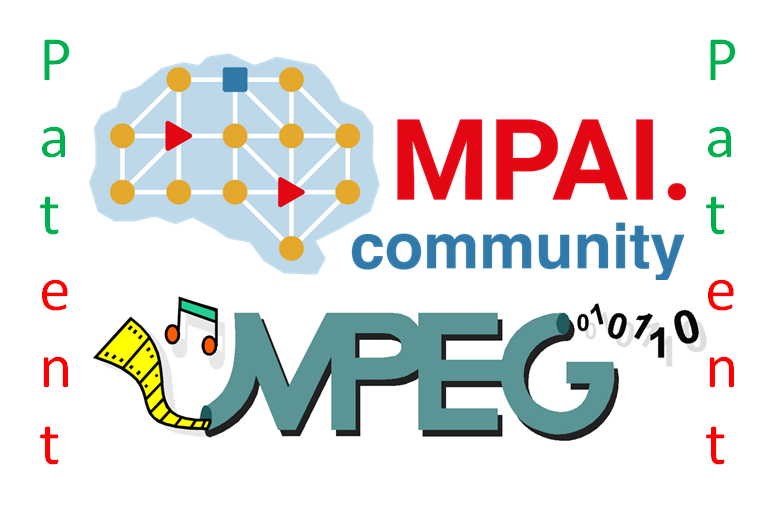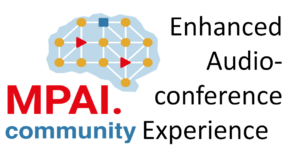Four years ago these days, I was writing a post on my blog titled A crisis, the causes and a solution. The subject was the issue of patents in MPEG standards. It was a time when I still had reasons to believe that something could be done about that issue.
In this post I want to revisit the issue because that post and others following it are still among the most read posts on my blog. This means that people still care about the issue. I can now address it with the advantage that, in the last four years, I gathered a lot more experience and I can say more.
First let me recall the issue:
- When Philips and Sony teamed up to make the Compact Disc and bring it to market successfully, they had time to agree, probably before they banded together, how they would share the royalties on their patents.
- When MPEG-2 Video was developed, a few people of good will understood that with the number of patents and patent holders they knew existed, it would be very hard for companies to get a licence for the patents. They worked to make it legal to establish patent pools. Read here a brief account of what happened.
- When MPEG-4 Advanced Video Coding (AVC) was developed, the company running the MPEG-2 patent pool was the natural candidate to run the patent pool for the new standard. Others thought there should be more than one pool in competition. They failed, and MPEG-4 AVC enjoyed success.
- When MPEG-H High Efficiency Video Coding (HEVC) was developed, those who thought there should be patent pools in competition succeeded. The result was that MPEG-H HEVC is used in the “captive” broadcasting market but has a much smaller market share in the internet distribution market (which is what matters now and will matter more in the future).
- My guiding principle in the development of standards was that the best known mechanism to foster innovation is to promise a reward to innovators. The patent system is a proven mechanism that achieves that goal. Unfortunately, many standards organisations just request patent holders to promise to give a licence to their patent at Fair and Reasonable terms, and Non Discriminatory conditions (FRAND). The success of MPEG-2 Video and MPEG-4 AVC demonstrates that FRAND works well for a market at its initial stages but is unable to cope with a mature market.
- In the mid 2000s, I understood that the FRAND road would be blocked and tried to take measures to get back on track with what had worked successfully in the standards before. I tried the “royalty-free” road with 3 standards, not because I thought that “royalty-free” fosters innovation, but because it could create a “managed competition” inside MPEG. One of those attempts was a technical success: 10 years after AVC approval, MPEG-4 Internet Video Coding (IVC) was demonstrated to have superior performance to MPEG-4 AVC. All 3 attempts ran into different roadblocks because of ISO rules.
- Different industry players had always individually tried to impose their proprietary formats, but in 2015 a group of major companies (Amazon, Cisco, Google, Intel, Microsoft, Mozilla, Netflix) established an organisation called Alliance for Open Media (AOM). In 2018 AOM published a video coding format (AV1) that AOM releases royalty free.
- In the second half of the 2010s, the MPEG-5 Essential Video Coding (EVC) standard was approved. EVC had a limited number of patent holding participants (the others elected not to participate) Another standard, the MPEG-5 Low Complexity Enhancement Video Coding (LCEVC) had just one patent-holding participant (the others elected not to participate). This disproves the statement made here that “EVC was MPEG’s answer to AV1 and HEVC’s calamitous royalty rollout”. EVC was one (successful) outcome of a long-term strategy whose implementation is studded with failures and successes.
- The idea to keep going and accelerate over the cliff of the Grand Canyon has been adopted by Hollywood. The same idea prevailed in the last years of MPEG. Undaunted by the MPEG-H HEVC failure, companies participating in the video coding activities simply pressed ahead and developed the MPEG-I Versatile Video Coding (VVC) standards. Currently, there is a patent pool that licences some VVC patents and another that is recruiting VVC patent holders. In the meantime, use of AV1 steadily grows. My prediction is unfortunately coming true.
The above was the (rather long) preamble to what this article is about, namely: is there an alternative way to develop standards that remunerates innovators or is the only possible future a stagnation fomented by royalty-free licensing?
The answer is yes to the former question. There is one alternative that is being practiced.
Moving Picture, Audio and Data Coding by Artificial Intelligence (MPAI), established in September 2020, has produced 5 standards. For 4 of those standards, it has adopted the following process:
- When it issues a Call for Technology, both Functional _and_ Commercial Requirements are attached to the Call.
- The Commercial Requirements are embodied in a Framework Licence in which the submitter of a proposal undertakes to
- Offer a licence for its patents included in the standard:
- At terms comparable with similar standard technologies.
- Not after products implementing the standard are put on the market.
- Select, with other patent holders, the preferred patent pool administrator, if its patents are included in the standard.
- Offer a licence for its patents included in the standard:
This is a revolution because, within the limits of antitrust legislation that does not allow companies to set a price before the standard is developed, the Framework Licence does add two essential elements that FRAND misses: when will the licence be available and at what price. It is a minimal departure from the roadblock of the FRAND policy, but one that can save innovation from stagnation.
If you are interested in usable standards, this is the time to join MPAI.
Join the fun, build the future!
A note: The paper MPEG: What Happened? makes the following statement; ‘On June 6, 2020, the message shown in Figure 1 appeared on Chiariglione’s MPEG site announcing that MPEG is “closed.” A little digging revealed that while Chiariglione had, in fact, separated from MPEG, MPEG was in fact not closed, though it was significantly reorganized.’
I believe that the duty of anybody producing publicly available information is not to produce fake news. The word MPEG is used in different context: a file format (e.g., mp4), a standard (e.g., MPEG-4), as part of a company name (e.g., MPEG LA), as ISO/IEC JTC 1/SC 29/WG 11 (aka as MPEG, or vice-versa), and more.
If the author of the article writes MPEG is “closed”, it certainly does not refer to a file, a standard, a company name, but to ISO/IEC JTC 1/SC 29/WG 11. Well, you can look at the ISO web site, but you will find no mention of ISO/IEC JTC 1/SC 29/WG 11.
I maintain that MPEG is closed. If anybody says otherwise, it propagates fake news.



